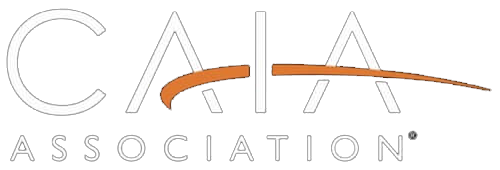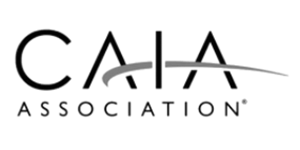By Claire Sawyer, Associate Director of Content Development, CAIA Association
Over the years, the asset management industry has witnessed a transformational shift in how investment strategies are crafted. Innovation has always been key, but the pace of disruption has accelerated, reaching the very top of the investment food chain. Today, asset owners are reevaluating their approach to investing, leaving traditional models in the past to embrace a more flexible and efficient approach.
In this episode, our hosts are joined by industry leaders Scott Chan and Molly Murphy to unpack this paradigm shift and offer their insights into the opportunities and challenges it presents for the industry. Let’s jump in.
Investment Model Evolution
Historically, two key models have defined institutional investing: the Endowment Model and the Canadian (Maple) Model.
The Endowment Model, popularized by David Swensen of Yale, revolutionized institutional investing by focusing on equity-heavy portfolios and a long-term investment horizon. Swensen’s approach was bold, particularly in its rejection of the fixed-income-heavy strategies of the past. The model emphasized diversification across asset classes, reliance on external managers, and heavy allocation to private markets.
The Canadian Model focused on building robust, insourced investment teams, allowing for more direct control over investments. This model, which emerged from public sector pension funds, emphasized world-class talent, innovation, and an independent governance structure to better manage the funds for future generations.
While both models have been successful in their own right, they’ve also presented challenges. The Endowment Model’s reliance on external managers leads to high fees and potential agency issues, while the Canadian Model’s heavy focus on insourcing can narrow deal flow and makes it difficult to source the specialized, highly technical required for success.
Enter the Collaborative Model
The Collaborative Model seeks to address these limitations by introducing a more dynamic and flexible approach. Rather than strictly insourcing or outsourcing, it encourages asset owners to forge new partnerships with peers, investment firms, research organizations, and other stakeholders to eliminate intermediaries, reduce fees, and align incentives with long-term objectives. As guest Scott Chan puts it, “The juxtaposition between what it costs for internal staff versus what it costs to deploy external management is really significant." These collaborations can help asset owners maximize returns while minimizing inefficiencies, fostering innovation and flexibility.
A More Sophisticated Toolkit
Central to the Collaborative Model is the idea of bespoke investment vehicles that are tailored to the unique needs of asset owners. Let’s explore these approaches in more detail.
Direct Investments
There are two primary types of direct investments: co-investments and solo investments.
Co-investments involve an LP and a GP investing alongside each other in the same deal, often when the opportunity is too large for the fund to absorb entirely or when there’s value in partnering.
Solo investments are sourced and structured entirely by the LP, with no involvement from the GP. These allow LPs to avoid high management fees and capture more upside potential, but they require greater expertise and management.
Empirical research shows mixed results for co-investments, but they’re highly successful for some firms, with guest Molly Murphy noting that “…our co-investment book has been the best performing part of our PE book by a measure of 5 times.”
Custom/Alternative Vehicles
Next, we have custom or alternative vehicles, which offer LPs a more hands-on approach while still working with GPs. These vehicles fall into two categories:
GP-directed vehicles: These are funds where the GP retains decision-making control, but the fund is tailored to meet the LP’s specific needs. Examples include parallel funds or special purpose vehicles.
LP-directed vehicles: In these discretionary funds, LPs have greater influence over investment decisions. Co-investment and pledge funds are typical examples.
Research has shown that LP-directed vehicles tend to outperform GP-directed vehicles and sometimes outperform the main fund.
Secondaries & NAV Lending
Secondaries and NAV lending have become increasingly popular as tools for LPs looking to enhance flexibility and optimize their portfolios.
Secondaries involve buying or selling LP interests or assets from an existing fund. LP-led secondaries allow LPs to exchange their stakes in funds, while GP-led secondaries involve the GP creating a continuation fund to house certain assets, giving LPs an opportunity to exit or stay invested.
NAV lending is a form of financing where funds borrow against the net asset value of their underlying assets. This can provide GPs with additional capital without diluting LP interests. It has become increasingly popular post-COVID to avoid forced exits and provide liquidity to struggling assets. However, it can introduce higher risks, especially in volatile markets.
Partnerships, Joint Ventures, & Wholly Owned Subsidiaries
Finally, partnerships, joint ventures, and wholly owned subsidiaries offer some of the most complex and sophisticated ways to structure investments. These models combine various investment tools to create more customized solutions. While they offer a high degree of flexibility and control, these approaches also emphasize the need for skilled and nimble teams. As guest Scott Chan puts it, "The closer you get to the transaction, the more dynamic you're going to need to be."
Beyond the Toolkit: The Importance of Relationships
While bespoke vehicles and partnership structures are undoubtedly important, one of the most foundational components of the Collaborative Model is, as hinted at by the name, people. Specifically, the ability to establish meaningful and productive relationships with stakeholders throughout the investment process. As Molly states, "These personal connections launch really fantastic ideas because people have to trust each other when you're breaking new ground” and “Every single person in our organization is now focused on deals, even down to the analyst, because every interaction they make at a conference can be meaningful."
The Future of Asset Ownership
The shift toward the Collaborative Model represents a new era in asset ownership. By blending the strengths of the Endowment and Canadian Models while embracing flexibility, innovation, and collaboration, asset owners are creating more efficient and impactful investments that align with long-term goals.
As more asset owners adopt this approach, we’re likely to see further changes in how investments are structured, managed, and deployed. This transformation is poised to reshape the future of the investment industry, making it an exciting time for GPs and LPs alike.
Want to hear more about the Collaborative Model and what it means for institutional investors? Listen to the full episode.
About the Contributor
Claire Sawyer is Associate Director of Content Development at CAIA Association. Prior to her current role, she served as Program Manager and Relationship Manager for the UniFi by CAIA™ learning platform. She holds the Sustainability and Climate Risk (SCR) certificate from GARP and is a Level 2 CAIA Candidate. She earned a BA in Legal Studies from UC Berkeley.
Learn more about CAIA Association and how to become part of a professional network that is shaping the future of investing, by visiting https://caia.org/




